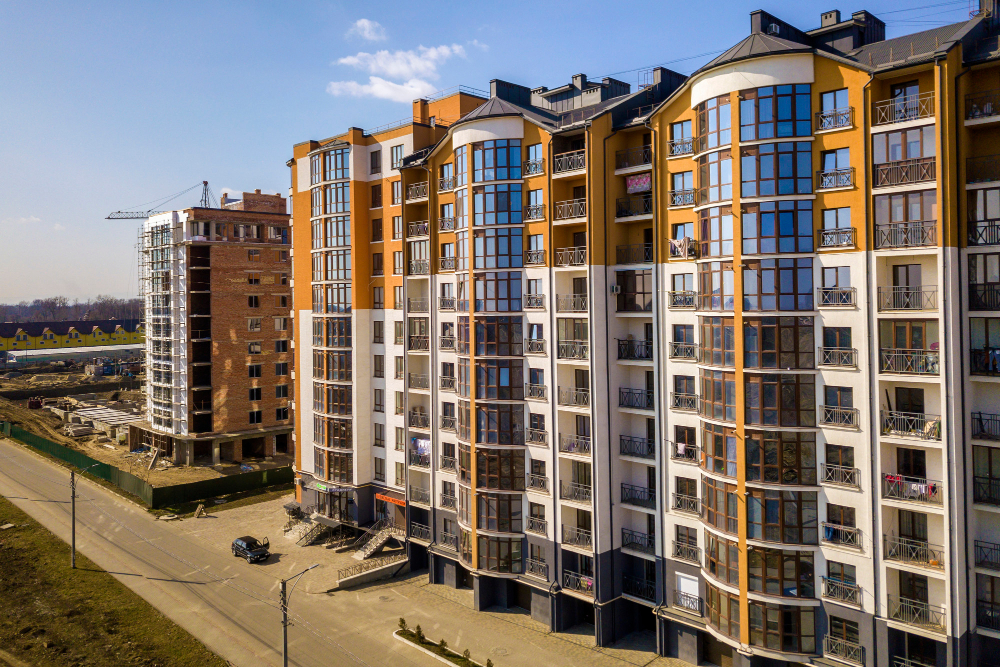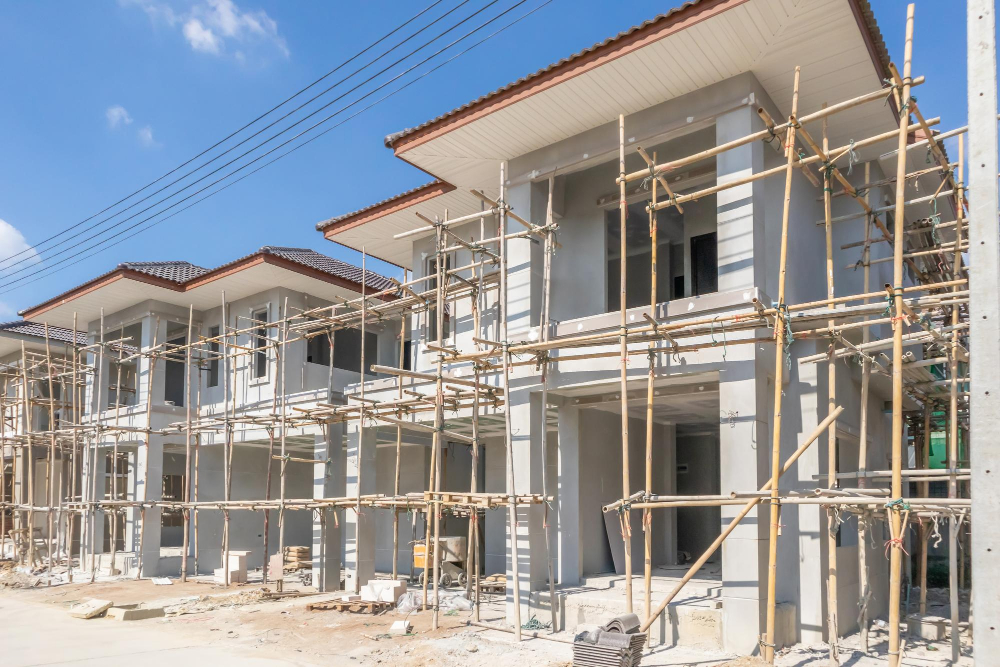Last updated on
Discover various alternatives to rent control that can effectively address housing affordability and availability issues in today’s rapidly evolving urban landscapes.
Are you tired of feeling trapped by the rising cost of rent? Do you dread the thought of having to move every year just to avoid a rent increase? Rent control may seem like a tempting solution, but it’s not always feasible or effective. Fortunately, there are alternative ways to keep your housing costs down and still live in style.
In this article, we’ll explore some creative and budget-friendly ideas that can help you achieve the home of your dreams without breaking the bank. So sit back, relax, and get ready to discover some exciting alternatives to rent control!
The Importance of Affordable Housing

Affordable housing is a critical issue that affects millions of people worldwide. It’s not just about having a roof over your head; it’s also about having access to basic amenities, such as clean water, electricity, and sanitation.
Without affordable housing options, many families are forced to choose between paying rent or buying food and other necessities.
The lack of affordable housing can lead to homelessness and displacement for vulnerable populations like low-income earners or those with disabilities. The high cost of living in urban areas often forces individuals into long commutes from distant suburbs where they can afford rent but have limited job opportunities.
Moreover, the availability of affordable homes has far-reaching economic implications beyond individual households’ well-being. Affordable housing creates jobs in construction and related industries while increasing property values for homeowners nearby.
Downsides of Rent Control

One major issue with rent control is that it can discourage landlords from investing in their properties or building new ones. When rents are capped, property owners have less incentive to maintain and improve their buildings since they cannot charge higher rents for upgrades or renovations.
Another downside of rent control is that it often leads to shortages in available rental units. Landlords may choose not to offer rentals at all if they cannot charge market rates for them, leading to a decrease in the overall supply of affordable housing options.
Some argue that rent control unfairly benefits long-term tenants while making things more difficult for newcomers who are looking for affordable places to live. Rent-controlled apartments tend not be vacated as frequently as non-rent-controlled units because tenants have little incentive (or ability) to move out when prices rise elsewhere.
Market-Based Alternatives to Rent Control

This involves creating an environment where landlords and tenants can negotiate rents based on supply and demand, rather than having government regulations dictate prices. In this system, landlords are free to charge whatever they want for their properties, while tenants have the option of choosing between different rental units that fit their budget.
While some argue that this approach may lead to higher rents in certain areas with high demand or low supply, it also allows for more flexibility in pricing and encourages new construction projects by providing incentives for developers who build affordable housing units.
Market-based alternatives offer a more dynamic solution compared with traditional rent control policies.
Inclusionary Zoning Policies

These policies require developers to set aside a certain percentage of new units for low-income residents or pay into an affordable housing fund. In exchange, they receive various incentives such as tax breaks or expedited permitting processes.
One example is San Francisco’s inclusionary zoning policy, which requires developers building 10 or more units to make at least 12% of them available at below-market rates for low- and middle-income households. This has resulted in thousands of new affordable homes being built over the past decade.
However, some argue that inclusionary zoning can lead to higher overall prices for market-rate units and may discourage development altogether if requirements become too burdensome. It’s important for policymakers and communities alike to carefully consider the potential benefits and drawbacks before implementing these types of policies.
Inclusionary zoning can be an effective tool in creating more equitable access to housing while also promoting economic growth through increased development activity.
Affordable Housing Trust Funds

These funds are typically established by local governments or non-profit organizations, which then use the money to provide financial assistance for low-income families and individuals who need affordable housing.
The idea behind Affordable Housing Trust Funds is simple: they allow communities to pool resources together in order to build more affordable homes. This can be done through a variety of means, such as providing grants or loans for developers who agree to build below-market-rate units, offering down payment assistance programs for first-time homebuyers, or even purchasing existing properties and converting them into affordable housing.
One of the biggest advantages of Affordable Housing Trust Funds is that they give local governments greater control over their own housing markets. Instead of relying on state-level policies like rent control (which may not work well in every community), cities and towns can tailor their own solutions based on their unique needs.
Of course, there are some challenges associated with creating an effective Affordable Housing Trust Fund program. For example, it’s important to ensure that the funds are being used efficiently and effectively – otherwise they may not have much impact on affordability levels in the long run.
Community Land Trusts
CLTs are nonprofit organizations that acquire land and hold it in trust for the benefit of a particular community. They then lease or sell homes on the land at affordable prices, with restrictions on resale value to maintain affordability over time.
By separating the cost of housing from the cost of land, CLTs make homeownership more accessible for low- and moderate-income families who might otherwise be priced out by rising property values. Because CLT residents collectively own the underlying land through their membership in a democratic organization, they have greater control over their living conditions than renters or individual homeowners.
CLTs have been successful in many cities across North America as an effective way to create permanently affordable housing while promoting community development and empowerment.
Housing Vouchers and Subsidies

These programs provide financial assistance to eligible households, allowing them to pay a reasonable portion of their income towards rent while the government covers the rest. The amount of subsidy varies depending on factors such as family size, income level, and location.
One popular program is Section 8 Housing Choice Voucher Program which provides rental assistance vouchers for private market apartments or houses. This program allows tenants more flexibility in choosing where they live while still receiving financial support from the government.
Another option is public housing which offers affordable units owned by local governments or non-profit organizations at below-market rates. While these options may not be available in every area due to limited funding and high demand, they can be an effective way for those struggling with affordability issues to find safe and stable housing.
Housing Vouchers and Subsidies offer a viable solution for those who cannot afford rising rents but do not want their living situation dictated by rent control policies alone.
Tenant Protection Laws

These laws vary from state to state, but they typically cover issues such as security deposits, rent increases, and evictions. For example, some states require landlords to provide a certain amount of notice before raising the rent or terminating a lease agreement.
Others prohibit retaliation against tenants who report code violations or exercise their legal rights.
While tenant protection laws can be helpful in preventing abuses by unscrupulous landlords, they may also have unintended consequences that could make it harder for renters to find affordable housing options. Some critics argue that these regulations discourage property owners from investing in new rental units or maintaining existing ones because of the added costs and risks associated with compliance.
Despite these concerns, many advocates believe that tenant protection laws are essential for ensuring fair treatment and preserving access to safe and decent housing for all residents regardless of income level or background.
Rent-to-Own Programs

These programs allow tenants to rent a property with the option of buying it at the end of their lease term. A portion of each month’s rent payment goes towards building equity in the home, which can be used as a down payment when purchasing it.
This alternative is especially beneficial for those who may not have enough savings or credit history to qualify for traditional mortgages. Rent-to-own programs also provide stability and security by allowing tenants to stay in one place while working towards homeownership.
However, it’s important to note that these programs come with some risks and drawbacks. The terms and conditions can vary widely between different landlords or companies offering such schemes, so potential buyers should carefully read all contracts before signing up.
If you fail to make payments on time or decide not purchase the property at the end of your lease term, you could lose any equity built up during your rental period along with other fees paid upfront.
Cooperative Housing Solutions

In a co-op, residents collectively own and manage the property, which can help keep costs down. Members of the co-op pay a monthly fee that covers their share of expenses such as mortgage payments, maintenance costs, and utilities.
This model allows for greater community involvement in decision-making processes and fosters a sense of ownership among residents.
One example of this type of housing solution is limited-equity cooperatives (LECs). LECs are designed to provide affordable homeownership opportunities for low- to moderate-income families by limiting resale prices on units within the cooperative.
This ensures that homes remain affordable over time while also allowing members to build equity through their investment in the property.
Cooperative housing solutions offer an attractive option for those who want more control over their living situation without having to worry about rising rents or unstable landlords.
Tax Incentives for Affordable Housing

Governments can offer developers and investors various tax credits, deductions, or exemptions in exchange for building or preserving affordable units. These incentives can help offset the high costs associated with constructing new buildings or rehabilitating old ones.
For example, Low-Income Housing Tax Credits (LIHTCs) are a popular federal program that provides tax credits to investors who finance low-income housing projects. The LIHTC program has helped create millions of affordable homes across the country since its inception in 1986.
In addition to federal programs like LIHTCs, many states and localities also offer their own unique tax incentive programs aimed at promoting affordable housing development. Some examples include property tax abatements on newly constructed buildings that include a certain percentage of below-market-rate units; sales-tax exemptions on construction materials used in qualifying projects; and reduced permit fees for developers who commit to building more-affordable homes.
By offering these types of financial benefits, governments can incentivize private investment into much-needed low- and moderate-income rental properties while simultaneously helping alleviate some pressure from renters struggling with rising rents due to limited supply.
Public-Private Partnerships

PPPs involve collaboration between government agencies and private developers to create new housing units or rehabilitate existing ones. These partnerships can leverage public resources, such as land or tax incentives, with private sector expertise and financing.
One example of a successful PPP is the New York City Housing Authority’s (NYCHA) NextGen Neighborhoods program. This initiative aims to redevelop underutilized NYCHA properties into mixed-income communities through partnerships with private developers.
The program will provide affordable housing for low- and middle-income families while generating revenue for NYCHA through ground leases.
Another example is Denver’s Mariposa District redevelopment project, which transformed an outdated public housing complex into a vibrant mixed-use community featuring affordable rental units alongside market-rate apartments, retail spaces, parks, and community facilities.
PPPs have their challenges too; they require careful planning and negotiation to ensure that both parties benefit from the partnership without compromising on affordability goals or social equity concerns.
Adaptive Reuse of Buildings

This involves repurposing existing buildings that are no longer in use, such as old factories or warehouses, into new residential spaces. Adaptive reuse can be a win-win solution for both developers and residents alike.
Developers can save money on construction costs by using existing structures instead of building from scratch, while residents get access to unique living spaces with character and history.
For example, an old warehouse could be converted into loft-style apartments with high ceilings and exposed brick walls. A former school could become affordable housing units for families or seniors.
Adaptive reuse projects also have environmental benefits since they reduce the need for new construction materials and minimize waste.
Encouraging Smaller Unit Development

This approach involves building more compact living spaces that are still comfortable and functional, but require less square footage than traditional apartments or houses. By reducing the size of each unit, developers can fit more homes into a given area and offer them at lower prices.
Smaller units have several advantages beyond affordability. They’re often located in denser urban areas with easy access to public transportation, shopping centers, restaurants and other amenities that make city life enjoyable.
They tend to be easier to maintain than larger homes since there’s less space for clutter or unnecessary items.
To encourage smaller unit development in your area you can advocate for zoning changes that allow higher density developments on existing lots; this will enable developers build multiple small units instead of one large home on a single lot. Another way is through tax incentives such as property tax abatements or reduced impact fees which could help offset some costs associated with developing these types of projects.
Reducing Regulatory Barriers

From zoning laws to building codes, there are many barriers that can make it difficult for developers to build new homes or renovate existing ones. However, some cities have started taking steps to reduce these regulatory barriers in order to encourage more affordable housing development.
For example, Minneapolis recently passed a comprehensive plan that eliminates single-family zoning and allows for denser development in certain areas. This change will allow for more multi-unit buildings and smaller homes on the same lot size as larger single-family homes.
Other cities have implemented “by-right” permitting processes that streamline approvals for certain types of projects or developments meeting specific criteria such as affordability targets or environmental standards.
By reducing regulatory barriers like these, we can create a more flexible environment where developers can experiment with innovative solutions while still ensuring safety standards are met.
Expanding Housing Supply

When there are more homes than people looking for them, prices tend to go down. This can be achieved through a variety of means, such as relaxing zoning restrictions and building codes that make it difficult or expensive to construct new homes.
In some cities, regulations require developers to include a certain percentage of affordable units in their projects. While this may seem like a good idea on paper, it can actually discourage development altogether if the costs outweigh the benefits for builders.
Another approach is encouraging smaller unit development and mixed-use buildings that combine residential and commercial spaces in one structure. This not only increases density but also creates vibrant communities where residents have easy access to amenities like shops and restaurants.
Ultimately, expanding housing supply requires collaboration between policymakers at all levels of government as well as private developers who are willing to take risks on innovative solutions.
Land Value Taxation

Instead of taxing the value of buildings, this system taxes the value of land itself. This encourages owners to develop their properties more efficiently and discourages them from holding onto vacant lots for speculative purposes.
By implementing Land Value Taxation, cities can generate revenue while also incentivizing developers to build more affordable housing units in desirable locations. This approach has been successfully implemented in several cities around the world, including Pittsburgh and Harrisburg in Pennsylvania.
Promoting Transit-Oriented Development

This approach involves building affordable housing near public transportation hubs, such as train stations and bus stops. By doing so, residents can save money on transportation costs while also enjoying easy access to employment opportunities and other amenities.
Transit-oriented development has become increasingly popular in recent years due to its many benefits. Not only does it help reduce traffic congestion and air pollution, but it also promotes walkability and community engagement.
TOD can attract new businesses to the area which creates more job opportunities for local residents.
Many cities have already implemented successful transit-oriented developments that provide affordable housing options for their citizens. For example, Denver’s “FasTracks” program has built over 100 miles of light rail tracks throughout the city with a focus on creating mixed-income communities around each station.
Incentivizing Mixed-Income Projects
These developments typically include a mix of market-rate, workforce, and subsidized units, allowing people from different income levels to live side by side. Incentivizing mixed-income projects is one way that policymakers can encourage developers to build these types of communities.
One approach is through tax credits or other financial incentives for developers who commit to building mixed-income housing in certain areas. This not only helps increase the supply of affordable homes but also promotes economic integration and reduces segregation.
Another strategy is through zoning policies that require new developments to include a certain percentage of affordable units or offer density bonuses for including them. This encourages developers to consider the needs of low- and moderate-income households when planning their projects.
Building Code Reform for Affordability

Building codes and regulations can add a considerable amount to the overall cost, making it difficult for developers to build affordable homes. However, some cities are starting to rethink their building codes with affordability in mind.
By reforming building codes and zoning laws, cities can encourage more efficient use of space and reduce construction costs without sacrificing safety or quality. For example, allowing smaller unit sizes or reducing parking requirements could make it easier for developers to create more units at lower prices.
Many jurisdictions have adopted “inclusionary zoning” policies that require new developments above a certain size threshold include a percentage of affordable units within them as part of their development plan approval process.
Reforming building codes may not be an immediate solution but has long-term benefits that will help increase housing supply while keeping costs down over time.
FAQ
Who benefits most from rent control?
Tenants benefit most from rent control due to the financial savings and limited legal increases in rent.
Why do economists not like rent control?
Economists dislike rent control because it can deter developers from building more houses, worsening the housing supply crisis in the United States.
What type of government interference is rent control?
Rent control is a type of government interference characterized by a price ceiling where a maximum allowable price is set.
How some consumers are made better off and some are not in a rent control situation?
In a rent control situation, some consumers benefit from access to lower-priced apartments, while others miss out due to excess demand and limited supply.
What are the long-term effects of rent control on housing quality and availability?
Long-term effects of rent control on housing quality and availability include decreased incentives for landlords to maintain or improve properties and reduced housing supply due to a reluctance to invest in the rental market.
How does rent control impact gentrification and neighborhood diversity?
Rent control helps mitigate gentrification and maintain neighborhood diversity by limiting rent increases and providing affordable housing options.
Can alternative housing policies, such as inclusionary zoning, provide more equitable solutions than rent control?
Alternative housing policies, like inclusionary zoning, can potentially offer more equitable solutions than rent control by ensuring a proportion of affordable housing units are integrated within market-rate developments.
Recap
Liked this article? Here's what you can read next:






